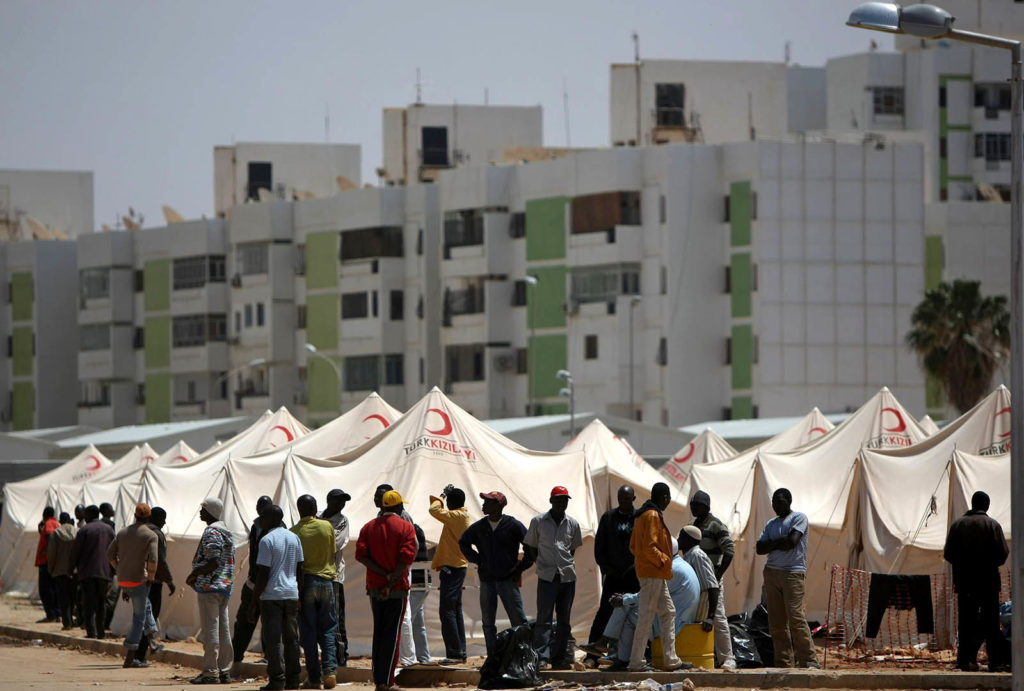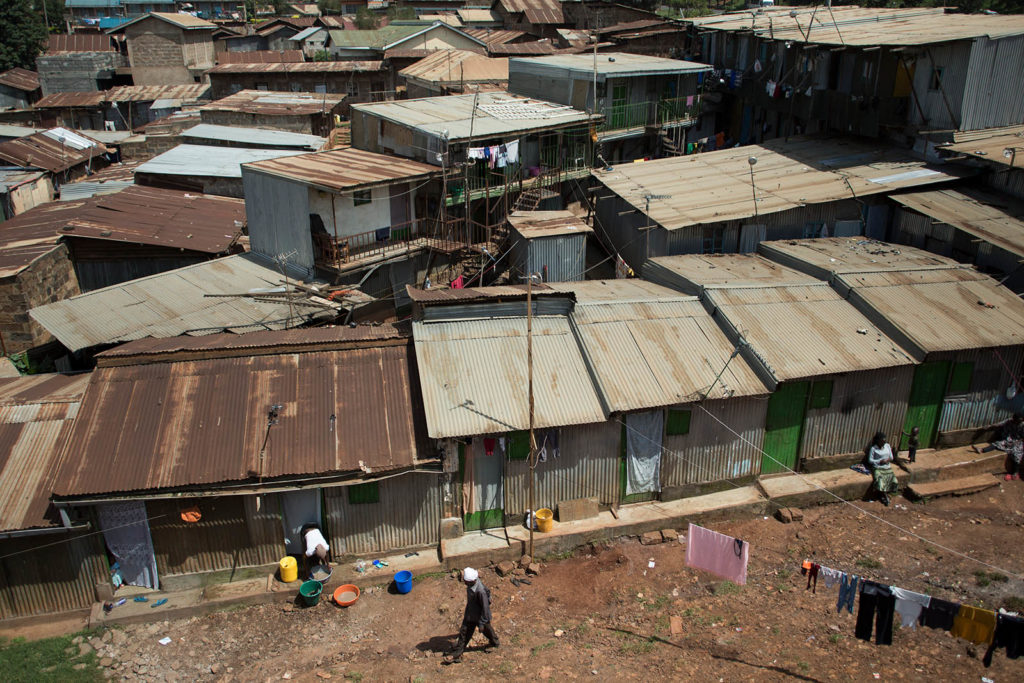
According to the United Nations Refugee Agency, at the end of 2018, there were 70.8 million people living around the world who had been forcibly displaced. As this number reaches a record high each year, humanitarian organizations work to meet new demands and concerns. And yet, according to Marianne Potvin (PhD ’19, MDes ’13), they have become mired in an unwavering focus on camps and shelters and have turned away from a tradition of innovation.
Potvin’s research at the Graduate School of Design focused on what she calls “humanitarian urbanism.” The concept’s definition is multifaceted. It refers to the international actors and organizations that work with refugees and disaster victims—with a specific emphasis on their relationship with spatial disciplines. And it also includes a broad consideration of “urbanism” that encompasses both the practice of urban planning and theories regarding human settlements.
With firsthand experience leading field teams for the International Committee of the Red Cross and other humanitarian NGOs, Potvin knew that she would need to base her research primarily on field manuals and handbooks, instead of on traditional architectural materials. “For many reasons, there just aren’t enough common instruments of architecture [from the field], such as plans or drawings,” she says. “During humanitarian crises, you might not keep archives, the instruments you have could get destroyed, or they may never make it back to headquarters where the centralized archive would be.” But she discovered that the unconventional sources are often invaluable and can contain “a lot more data than a single drawing.”
In the following conversation, she discusses the problem with camps, the changing role of technology in humanitarianism, and the vital—but undervalued—role of architects and planners in humanitarian organizations.
Designing a camp is attractive to an architect because it’s abstract, gridded, and has sensual characteristics that architects like. It is in part because of this that we have paid too much attention to, and been limited by, this frame of reference.
on the fascination among architects with designing the “perfect camp”
How does the academic vision of camps and shelters bump up against the reality on the ground?
When I was working as a shelter-and-settlement program manager in suburban Kabul, whatever I could get my hands on regarding camps was completely inadequate to my work. And yet, in the literature and especially in design schools, a lot of interest is in designing the “perfect camp.” Architects are obsessed with camps because they are considered the origin of everything—the origin of the city, for example. And yet they are always used as an example of the “non-city” in conversations about what is and is not a city. I think that categorization doesn’t get us very far because it doesn’t describe the conditions of humanitarian spaces, most of which are in between camps and cities.
There’s a camp fetish. Designing a camp is attractive to an architect because it’s abstract, gridded, and has sensual characteristics that architects like. It is in part because of this that we have paid too much attention to, and been limited by, this frame of reference. I’m not saying that work on the urbanization of camps isn’t useful, but it’s limiting.
In the older field manuals from the 1970s and early ’80s, there was often a sense that you needed to be conscious of the surroundings and respectful of local customs, that you should use local materials and be aware of the ways in which refugees live in these spaces. This was not very integrated into practice though.

The split between a camp and the local population echoes the ways in which walls both keep people out and imprison those within them. In a practical sense, not separating these two populations—geographically or metaphorically—could generate solutions that benefit everyone in a region.
A prime instance of this occurred in 2015 at the height of the influx of Syrian refugees into Lebanon. There was a no-encampment policy, so the refugees (who became one-fourth of the population) were dispersed everywhere. A water engineer working at a humanitarian organization told me that they were working on large projects, such as big water-distribution stations. Even though, conventionally speaking, humanitarian money isn’t supposed to go into hard, large-scale infrastructure, they were putting all their resources into this because they would provide water for the refugees as well as improve the conditions of the larger population.
Technicians are considered value-free problem solvers, and they are often not seen as strategic in shaping a humanitarian organization. My archival and fieldwork research showed that the international humanitarian law specialist or the refugee lawyer has a hierarchical position above the architect or planner. In fact, often there aren’t even distinctions made between the architect and the planner, or even the agronomist and the water engineer.
I argue that architects and planners are the ones who need to take the legal framework and figure out how to implement it—how a camp is planned, where you put it, how you decide whether to have a camp or if you go for, say, rent subsidies. That has a huge impact. There should be more cross-dialogue between the technical and legal units than there currently is.
There was even a moment in history when the United Nations Refugee Agency decided to call what they were doing “planning.” This was so important because it was a moment when they acknowledged that they were not just doing “refugee protection,” they were influencing urbanization issues. They have since completely forgotten about this.
Do you see technology, such as crisis mapping (which enables the collection of real-time data during disasters), playing a helpful role in humanitarian urbanism?
For a very long time, the dominant approach was for “appropriate technology,” which kept everything low-tech because of the idea that you couldn’t bring complex technologies into the “Third World.” Then in the last five to ten years, the pendulum has swung in the opposite direction, with a belief that AI will save us all and the assumption that new technologies will make the lives of humanitarians easier. I’m not advocating for a return to appropriate technology, but we should remember what we once thought about technology so that we can balance our current excitement. We just need to be cautious.
That being said, even though I criticize crisis mapping, it is useful. Crisis networks comprised of volunteers are forming to help people map their areas. A tool like this is democratizing the humanitarian field because all of a sudden you have a software engineer in Silicon Valley who may not go to Kabul for nine months but, with his technical expertise, can perfect a system of geographical features recognition.
These communities are going to challenge the humanitarian field in good ways. They’re raising the question about who the new humanitarians are.